11 products
- Red Wine
- Blauburger, Zweigelt
- Biodynamic, Natural, Organic, Vegan-Friendly
- Dry
- Residual Sugar: 2.0 g/l
- Light Bodied
- 750ml
- 12.0% alc./vol
About the Winery
Matthias Hager
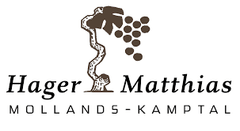
The Hager Matthias winery is located in the small village of Mollands in the Kamptal area of Lower Austria. Matthias took over the 12-hectare land and the family business at an early age. He aims to produce the best quality wine possible and to focus on being in balance with nature. The lands are cultivated according to biodynamic principles and are certified Demeter. Matthias has a vast knowledge about plants and insects, and about keeping the flora and fauna in harmony with the vines. Matthias Hager is one of the most experimental winemakers in the Kamptal region, Austria. He understood early how to work with different soil types from loess to clay. He established different product lines to highlight these differences: the blue one representing fresh, lively wines including Grüner Veltliner and Sauvignon Blanc; and the brown line gravitating towards more earthy, flavourful produce and the red line stands for no sulphites!
- Red Wine, White Wine
- Cabernet Franc, Chardonnay, Malbec, Sauvignon Blanc, Sémillon
- Sustainable
- Dry
- 750ml
About the Winery
Matías Riccitelli
 Matías Riccitelli was born in Cafayete, Salta. He identifies as a traveler and a tireless dreamer. After countless harvests throughout the world, he decided to combine everything he has learned and dedicate himself to exploring the excellent terroirs of Mendoza and the teachings of his mentor, and father, Jorge Riccitelli.
Matías Riccitelli was born in Cafayete, Salta. He identifies as a traveler and a tireless dreamer. After countless harvests throughout the world, he decided to combine everything he has learned and dedicate himself to exploring the excellent terroirs of Mendoza and the teachings of his mentor, and father, Jorge Riccitelli.Matías started his boutique winery in 2009, located in Las Compuertas at 1100 meters above sea level. It is the highest area of Lujan de Cuyo, and here he tends 20 hectares of ungrafted old vineyards. Matías also works with small, independent growers that own their lands at the bottom of the Andes halfway between 1000 and 1700 meters above sea level - in Gualtallary, Chacayes, Altamira and La Carrera.
All harvests are conducted by hand and fermentation takes place in small concrete vats and concrete eggs. Purity and delicacy in winemaking are prized by Matías and great care is taken in preserving the fruit’s singularity in order to obtain vibrant wines.
- Red Wine
- Syrah
- Biodynamic, Natural, Organic, Vegan-Friendly
- Dry
- Light Bodied
- 750ml
- 13.98% alc./vol
About the Winery
Domaine du Coulet - Matthieu Barret
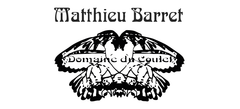
Matthieu Barret was born in Aix-en-Provence in 1975 and studied viticulture in Beaune.
He is the 7th generation vigneron and joined his grandfather in Cornas in 1997. Previously, his family had only been farming and selling grapes. He practices biodynamic viticulture, obtaining very low yields (23 hl/ha) and extraordinary quality. He describes his wines as being 100% grape, with a very low sulphite addition. His wines are extremely clean, and, true to the Cornas character. Domaine du Coulet was founded by Matthieu Barret’s grandfather after WWII, and over the years has supplied grapes to some of the best known producers in the Northern Rhône, including Chapoutier and Delas. While his father eschewed the agrarian lifestyle, opting instead for a career in international business, Matthieu knew early on that he wanted to be a vigneron. In 1998 at the age of only 23, he took over the family’s 25 acres of well-situated vines on the terraced hillsides of Cornas.
From the beginning, Matthieu has employed natural, organic practices and by 2002 (his second year of production) the domaine received its biodynamic certification. With each vintage, Matthieu has gained a better understanding of his vine parcels and through thoughtful experimentation, he now turns out a remarkable selection of Cornas wines that express the unique nuances of each micro-terroir. No new oak, no racking, minimal use of sulfur and no fining or filtration. Pure, sexy Syrah.
- Red Wine
- Syrah
- Biodynamic, Natural, Organic, Vegan-Friendly
- Dry
- Medium Bodied
- 750ml
- 12.5% alc./vol
About the Winery
Domaine du Coulet - Matthieu Barret

Matthieu Barret was born in Aix-en-Provence in 1975 and studied viticulture in Beaune.
He is the 7th generation vigneron and joined his grandfather in Cornas in 1997. Previously, his family had only been farming and selling grapes. He practices biodynamic viticulture, obtaining very low yields (23 hl/ha) and extraordinary quality. He describes his wines as being 100% grape, with a very low sulphite addition. His wines are extremely clean, and, true to the Cornas character. Domaine du Coulet was founded by Matthieu Barret’s grandfather after WWII, and over the years has supplied grapes to some of the best known producers in the Northern Rhône, including Chapoutier and Delas. While his father eschewed the agrarian lifestyle, opting instead for a career in international business, Matthieu knew early on that he wanted to be a vigneron. In 1998 at the age of only 23, he took over the family’s 25 acres of well-situated vines on the terraced hillsides of Cornas.
From the beginning, Matthieu has employed natural, organic practices and by 2002 (his second year of production) the domaine received its biodynamic certification. With each vintage, Matthieu has gained a better understanding of his vine parcels and through thoughtful experimentation, he now turns out a remarkable selection of Cornas wines that express the unique nuances of each micro-terroir. No new oak, no racking, minimal use of sulfur and no fining or filtration. Pure, sexy Syrah.
- Red Wine
- Tempranillo
- Dry
- Residual Sugar: 1.2 g/l
- 750ml
- 14% alc./vol
About the Winery
Bideona
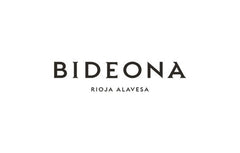
Bideona owns or manages over 300 parcels of extraordinary vines in villages throughout the Rioja Alavesa, the coolest, smallest and most Atlantic sub-zone of Spain’s most famous wine region.
The vineyards of the Rioja Alavesa are defined by parcels of old bush vines planted on terraces or hillside slopes with a high percentage of limestone. Located in the foothills of the Sierra Cantabria, Bideona’s vines have an average age of 50 years and many were planted in the 1920s, 30s and 40s, before high-yielding clones became available.
Bideona puts the focus firmly on terroir by making each wine in its Vino de Pueblo range as a field blend of Tempranillo and other native varieties from plots in an individual village. Each is named with an acronym – L3Z4 for Leza, L4GD4 for Laguardia, S4MG0 for Samaniego and V1BN4 for Villabuena – owing to DOCa Rioja regulations that only allow village names to be marked if both the winery and the vineyard are in the same location.
“Bideona’s reason for existence is to make wines that show the personality of the Rioja Alavesa and its historic wine villages” states company co-founder and director, Andreas Kubach MW. “We have access to a wealth of diverse plant material in our parcels of old vines, which we believe contributes to the complexity of the wines as well as the differences between villages.”
Press Reviews
Wine Align
92 points - Michael Godel
Nine months has done nothing to diminish the energy and swagger of Las Parcelas which brings together fruit from Bideona’s four distinct terroirs each labeled under a viñedos singulares distinction. Sure this may lack the depth of those unique expressions but it does gather them as one layered tempranillo and best of all the 2021 vintage is presented in high esteem. Much anticipation for what else is still to come. Last tasted December 2024. Las Parcelas takes winemaker Tao Platon’s Rioja work to another level because fruit remains at the core in the most pure and clear way. There is little to no distraction by wood or other winemaking work and terroir speaks about as prominently as it can in a wine at this price level. Perfumed, silken, moderate of style, easy to drink and finely tannic without austerity or unnecessary grip. Fine in so many ways. Drink 2025-2030. Tasted March 2024.
92 points - John Szabo, MS
Bideona draws from over 300, mostly tiny parcels in Rioja Alavesa, the highest sub- region in the denomination, aiming to capture the perfume and freshness of high-elevation tempranillo and other locals. Las Parcelas, is a blend of parcels, considered a 'regional' wine in the portfolio's hierarchy, below single vineyard and single village wines, but's it's a beauty on every level, especially having moved past the reductive stage noted in my previous review. I love the delicate fragrance offered straight off the top, replete with fresh red fruit and an herbal-floral twist, almost peppery, while the palate delivers crunchy limestone acids and silky-firm tannins lending a sandy texture. I enjoy the freshness of fruit now, though I suspect tannins will soften nicely over the next year or two if you're seeking more silk. Tasted December 2024. Previous: Bideona's Las Parcelas Rioja hails from the foothills of the Sierra Cantabria in the Rioja Alavesa, the highest elevation vineyards in the denomination. There's a slightly reductive edge to this young, predominantly tempranillo- based red, with a mix of both fresh red and also black fruit, with notable floral components and a notable lack of obvious wood influence, you could say a more contemporary style. The palate is plush and nicely concentrated without excess, deeply fruit with lasting flavours. It makes a great counterpart to Bideona's more traditional Artelan Reserva bottling at a similar price, two styles, two very good wines. Drink this one from about 2026-2032. Tasted March 2024.
- Red Wine
- Frappato
- Natural, Sustainable
- Medium Bodied
- 750ml
- 12.5% alc./vol
About the Winery
Cantine Barbera
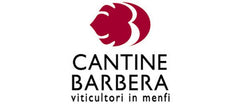
Cantina Barbera is located in the Menfi Coast, on the west coast of Sicily. The vineyards are about one mile from the Mediterranean Sea: an uncontaminated deep blue sea, facing South, where low cliffs and sandy dunes create a beautiful environment protected by the Belice River Natural Reservation Fund.
A third generation farmer, Marilena Barbera farms the Inzolia that her grandfather planted in the 20's, just as she attends to the native varietals that are the new frontier of her own generation: Perricone, Nerello, Alicante, Nero d'Avola and Grillo. Marilena makes her wines praticticing organic farming and natural winemaking, while paying utmost respect to Menfi's terroir.
"At the winery, I chose to work only with spontaneous fermentations and to adopt non invasive winemaking practices, in order to respect the unique personality of Sicilian native grape varieties and the beautiful land to which they belong."
- Red Wine
- Tempranillo
- Sustainable
- Dry
- Residual Sugar: 1.1 g/l
- 750ml
- 14.3% alc./vol
About the Winery
Bideona

Bideona owns or manages over 300 parcels of extraordinary vines in villages throughout the Rioja Alavesa, the coolest, smallest and most Atlantic sub-zone of Spain’s most famous wine region.
The vineyards of the Rioja Alavesa are defined by parcels of old bush vines planted on terraces or hillside slopes with a high percentage of limestone. Located in the foothills of the Sierra Cantabria, Bideona’s vines have an average age of 50 years and many were planted in the 1920s, 30s and 40s, before high-yielding clones became available.
Bideona puts the focus firmly on terroir by making each wine in its Vino de Pueblo range as a field blend of Tempranillo and other native varieties from plots in an individual village. Each is named with an acronym – L3Z4 for Leza, L4GD4 for Laguardia, S4MG0 for Samaniego and V1BN4 for Villabuena – owing to DOCa Rioja regulations that only allow village names to be marked if both the winery and the vineyard are in the same location.
“Bideona’s reason for existence is to make wines that show the personality of the Rioja Alavesa and its historic wine villages” states company co-founder and director, Andreas Kubach MW. “We have access to a wealth of diverse plant material in our parcels of old vines, which we believe contributes to the complexity of the wines as well as the differences between villages.”
Press Reviews
Wine Align
95 points - John Szabo, MS
From several high elevation parcels in the village of Samaniego, the youngest of which was 50 years in 2020, and the oldest 90 years, this is stunningly perfumed and elegant Rioja. Aromas and flavours feature sour cherry and wild resinous herbs, fresh rose petal, red currant and orange peel, while the palate is taut and tight, resting on riveting acids and fine but still grainy tannins. It seems to be moving slowly and needs another 2-3 years minimum I'd say to enter a primary drinking window. It will be an absolute beauty. Tasted December 2024.
92 points - Michael Godel
More crunch and savour than both the L4GD4 and V1BN4 and while not possessive of the same level of profound quality as both those wines this does deliver fineness in its own right. A reminder how this and its siblings are neither of Reserva or Gran Reserva distinctions but instead a look at viñedos singulares, newest of the Rioja categories. S4MG0 (Samaniego) hails from the higher slopes of a paraje (spot) at Samaniego and the herbal, think minty cool exhale from the tempranillo is so different than what comes out of the other Viños de Pueblo wines. Nearly evergreen as the finish and a delight with good weight, all parts coming together at the finish. Drink 2024-2028. Tasted December 2024.
93 points - David Lawrason
Bideona was formed in 2018, selecting from over 300 small, old vine parcels in Rioja Alavesa. This is from old vines at the highest altitude near the village of Samaniego. Despite the colour depth and 14.5% alcohol there is a lightness of being here as a result. The nose shows blackberry, subtle minty herbs and spice. It is medium weight, fairly supple and warming. Quite dusty tannins here. The length is excellent. My favourite of four bottlings tasted side by side in December 2024
- Red Wine
- Grenache
- Natural, Sustainable, Vegan-Friendly
- Dry
- Full Bodied
- 750ml
- 13.8% alc./vol
About the Winery
Bodegas Puiggròs
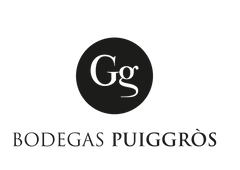
Since 1843, the Puiggros family has been producing wines from their own vines in the Odena region of Catalunya for the family and close friends. Over generations they had come to realize that their vineyards and techniques were something worth sharing with the world. A sincere dedication to the terroir in their zone and the indigenous varieties that grow there, allows them to constantly discover ways to unlock all of the magic that lies within their land.
Starting with conscious and clean farming in the vineyard, they hand-harvest only the best fruit for their production, and ferment each vineyard separately in varying vessels to accentuate what the vines have to show; some in stainless steel, and many in clay amphora of differing sizes. All the while seeing very little sulfur use (if any) until bottling. Puiggros is pushing the quality of northeastern Spain's wines forward, and doing so in a clean and unique way.
Press Reviews
WineAlign
92 points - Michael Godel
A specialist in clay-pot aged garnatxa and this bottling being a red that is only partially aged in amphora. Same limestone and clay soil grown garnatxa at 500m with a view to the mountains of Montserrat, in the outskirts of the village of Odena. As with all these wines there is a clarity and freshness to bely the methodology while here the florally-charged aromas are nothing if not beautiful. Like candied perfume, sweetly scented, inviting and gregarious. Generous too, openly so but also a thing of being so obviously natural. Hard to decide between the full on amphora white or this partially aged red. Both, is the answer. Drink 2023-2027.
Tasted February 2023 - 2020 vintage
90 points - Megha Jandhyala
There is a guileless charm to this fresh and fruity grenache. It was made with fruit sourced from vines planted at 500 meters above sea level in the outskirts of Odena in Catalunya and fermented in either clay amphorae or large concrete tanks. I like the cheerful flavours of juicy red fruit, accompanied by subtle notes of earth and resinous herbs, and pretty aromas of violets. The palate is medium-bodied, warm, and comforting, with fine tannins and juicy, fresh acids. The finish is long and fruity.
Tasted February 2023 - 2020 vintage
90 points - John Szabo, MS
A clay amphora-aged garnacha from Catalunya, high ripeness is evidenced by the sweet, red currant and cherry jam flavours alongside 14.5% alcohol declared. Yet the palate remains firm and fresh, juicy even, thanks to the zesty acids. Tannins are light and fine, and length and depth are good. I'd let this settle for another year or two to further the quest for complexity.
Tasted January 2024 - 2021 vintage
- Red Wine
- Tempranillo
- Sustainable
- Dry
- Residual Sugar: 1.1 g/l
- 750ml
- 14.3% alc./vol
About the Winery
Bideona

Bideona owns or manages over 300 parcels of extraordinary vines in villages throughout the Rioja Alavesa, the coolest, smallest and most Atlantic sub-zone of Spain’s most famous wine region.
The vineyards of the Rioja Alavesa are defined by parcels of old bush vines planted on terraces or hillside slopes with a high percentage of limestone. Located in the foothills of the Sierra Cantabria, Bideona’s vines have an average age of 50 years and many were planted in the 1920s, 30s and 40s, before high-yielding clones became available.
Bideona puts the focus firmly on terroir by making each wine in its Vino de Pueblo range as a field blend of Tempranillo and other native varieties from plots in an individual village. Each is named with an acronym – L3Z4 for Leza, L4GD4 for Laguardia, S4MG0 for Samaniego and V1BN4 for Villabuena – owing to DOCa Rioja regulations that only allow village names to be marked if both the winery and the vineyard are in the same location.
“Bideona’s reason for existence is to make wines that show the personality of the Rioja Alavesa and its historic wine villages” states company co-founder and director, Andreas Kubach MW. “We have access to a wealth of diverse plant material in our parcels of old vines, which we believe contributes to the complexity of the wines as well as the differences between villages.”
Press Reviews
Wine Align
94 points - John Szabo, MS
One of Bideona's 'single village' wines, in this case Villabuena, this is gorgeous wine, full stop. Hillside vineyards sit around 500 m above sea level, and ripening is later than in Laguardia but earlier than in Leza, a sort of Goldilocks zone for balance, concentration and freshness. Just less than half of the 2020 was aged in 300l barrels (one- quarter new) with the rest in tank, adding to the freshness and preserving the floral nature of 'mountain' tempranillo. I love the silky precision on the palate and the streak of savoury herbs that run through from start to long finish. Acids are perfectly ripe and crunchy, and the perfume lingers on and on. Delicious now, but no rush - hold easily into the '30s. Tasted December 2024.
92 points - Michael Godel
One of of Bodega Bideona's four Vinos de Pueblo (village- designated) series of wines, each with their own acronym. In this case VIBN4 to represent Villabeuna at an elevation in and around 500m. Considered a field blend but with mostly tempranillo and a 50-50 aging style, barrels and tanks for that integrated layering of micro-ox and equalling freshness. A village wine of sleek fruit and authentic flaws, meaning the human eye sorts the grapes, not a machine and character inevitably ensues. Luxe and ripe with a whisper of Villabeuna swarthiness though frescura outworks obscura for a dangerously clean and easy red to knock back. There is some grip, punch and circumstance, so be aware of the sober power of this wine. Will age gracefully for three-plus years. Drink 2024- 2027. Tasted June 2024.
- Red Wine
- Tempranillo
- Sustainable
- Residual Sugar: 1.1 g/l
- 750ml
- 14.3% alc./vol
About the Winery
Bideona

Bideona owns or manages over 300 parcels of extraordinary vines in villages throughout the Rioja Alavesa, the coolest, smallest and most Atlantic sub-zone of Spain’s most famous wine region.
The vineyards of the Rioja Alavesa are defined by parcels of old bush vines planted on terraces or hillside slopes with a high percentage of limestone. Located in the foothills of the Sierra Cantabria, Bideona’s vines have an average age of 50 years and many were planted in the 1920s, 30s and 40s, before high-yielding clones became available.
Bideona puts the focus firmly on terroir by making each wine in its Vino de Pueblo range as a field blend of Tempranillo and other native varieties from plots in an individual village. Each is named with an acronym – L3Z4 for Leza, L4GD4 for Laguardia, S4MG0 for Samaniego and V1BN4 for Villabuena – owing to DOCa Rioja regulations that only allow village names to be marked if both the winery and the vineyard are in the same location.
“Bideona’s reason for existence is to make wines that show the personality of the Rioja Alavesa and its historic wine villages” states company co-founder and director, Andreas Kubach MW. “We have access to a wealth of diverse plant material in our parcels of old vines, which we believe contributes to the complexity of the wines as well as the differences between villages.”
Press Reviews
Wine Align
93 points - Michael Godel
L4GD4, one of four viñedos singulares or singular landscape explorations from Bideona from a range of tempranillo also known as Viños de Pueblo. This old vines example is Laguardia, literally “the guard” because of its defence position for what is a most endearing village. Ripens early, followed by that of the others in the line - Samaniego, Villabuena and Leza. The 2020 feels like a wine of more substance and depth than that of 2019 though without the same level of intensity. That said there is a seriousness, at times a brooding character and in the end a profundity that must be recognized. Has already done some travelling and maturing but there should be no reason to think it won’t drink well for another six or seven years. Drink 2024-2029. Tasted December 2024.












